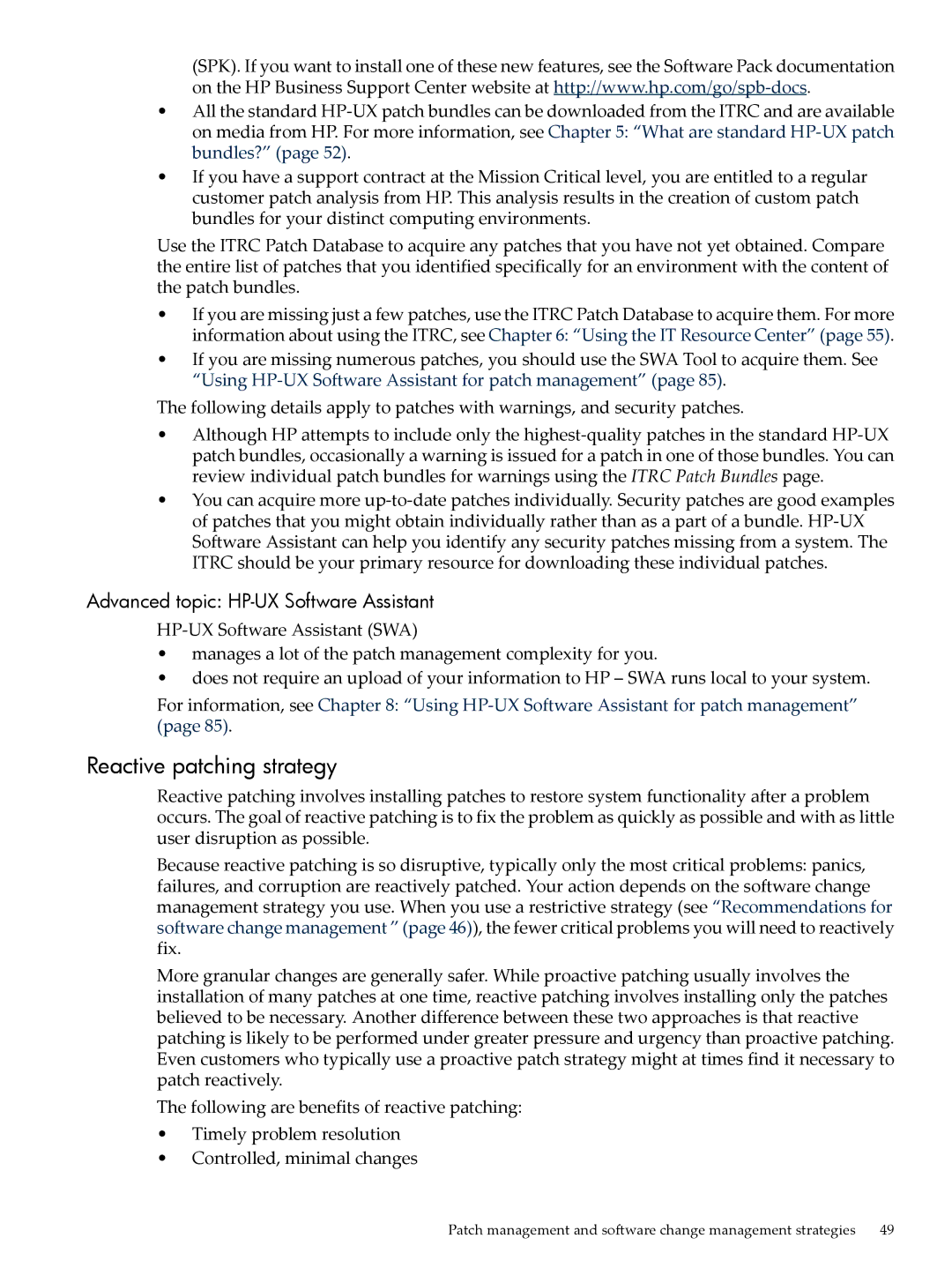(SPK). If you want to install one of these new features, see the Software Pack documentation on the HP Business Support Center website at
•All the standard
•If you have a support contract at the Mission Critical level, you are entitled to a regular customer patch analysis from HP. This analysis results in the creation of custom patch bundles for your distinct computing environments.
Use the ITRC Patch Database to acquire any patches that you have not yet obtained. Compare the entire list of patches that you identified specifically for an environment with the content of the patch bundles.
•If you are missing just a few patches, use the ITRC Patch Database to acquire them. For more information about using the ITRC, see Chapter 6: “Using the IT Resource Center” (page 55).
•If you are missing numerous patches, you should use the SWA Tool to acquire them. See “Using
The following details apply to patches with warnings, and security patches.
•Although HP attempts to include only the
•You can acquire more
Advanced topic: HP-UX Software Assistant
•manages a lot of the patch management complexity for you.
•does not require an upload of your information to HP – SWA runs local to your system.
For information, see Chapter 8: “Using
Reactive patching strategy
Reactive patching involves installing patches to restore system functionality after a problem occurs. The goal of reactive patching is to fix the problem as quickly as possible and with as little user disruption as possible.
Because reactive patching is so disruptive, typically only the most critical problems: panics, failures, and corruption are reactively patched. Your action depends on the software change management strategy you use. When you use a restrictive strategy (see “Recommendations for software change management ” (page 46)), the fewer critical problems you will need to reactively fix.
More granular changes are generally safer. While proactive patching usually involves the installation of many patches at one time, reactive patching involves installing only the patches believed to be necessary. Another difference between these two approaches is that reactive patching is likely to be performed under greater pressure and urgency than proactive patching. Even customers who typically use a proactive patch strategy might at times find it necessary to patch reactively.
The following are benefits of reactive patching:
•Timely problem resolution
•Controlled, minimal changes
Patch management and software change management strategies 49
